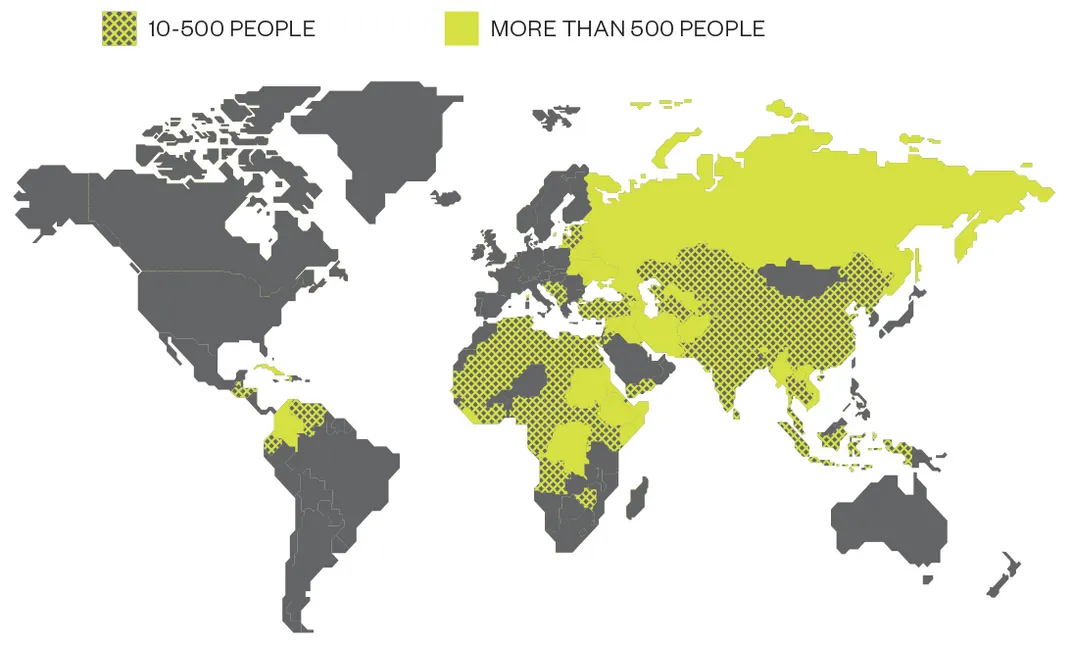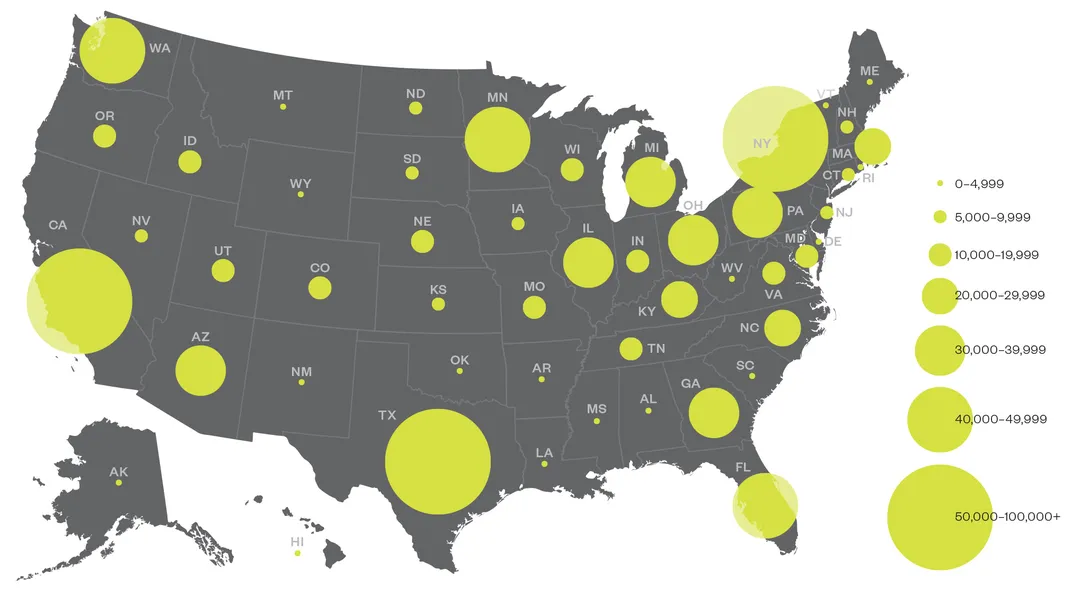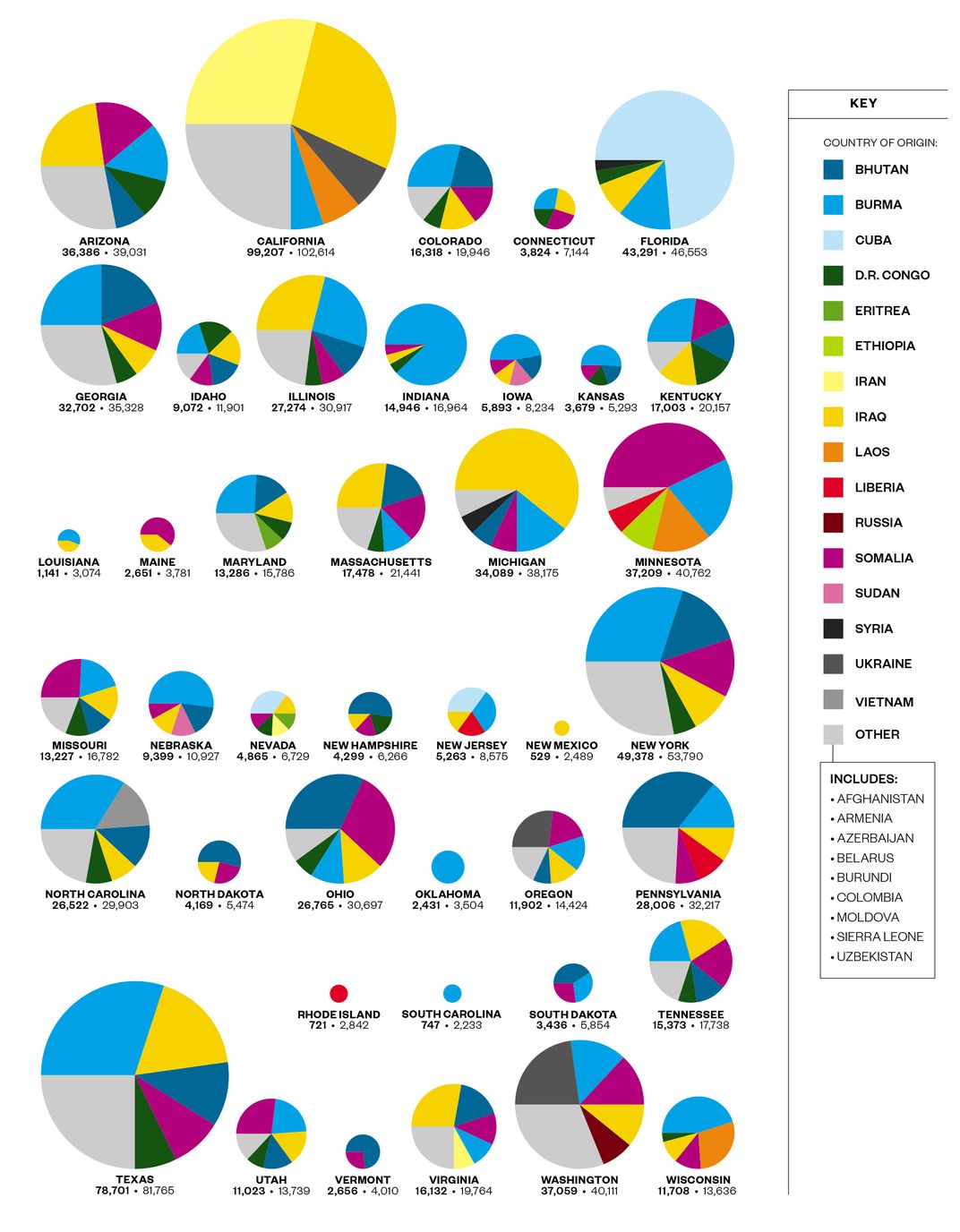By the Numbers: The United States of Refugees
President Trump’s order temporarily barring all refugees and many immigrants has ignited debate about U.S. policies toward outsiders
The United States has long been the global leader in resettling refugees, strictly defined as people forced to flee their home country to escape war, persecution or violence. Since October 2001, more than 895,000 refugees have settled here, typically after being referred by the United Nations and vetted by the State Department in a process that takes at least 18 months. (By comparison, a million or so legal immigrants arrive annually.)
As you can see from the map below, refugees to the United States have come mostly from the Middle East, Asia and Africa. While many immigrants, legal and undocumented, come from Latin America, U.S. regulations make it difficult for Central and South Americans to qualify as refugees.
Where They're From

Where They End Up

Somalia to Minnesota. Burma to Indiana. Settling in the States
These pie charts compare refugee populations resettled in 41 states since October 2001. For clarity, the breakdown in each state is limited to nationalities with at least 500 people, and no more than the top 5 nationalities are shown. Below each state name is the number of refugees, in bold, reflected in the pie chart; it’s followed by the total number of refugees.
